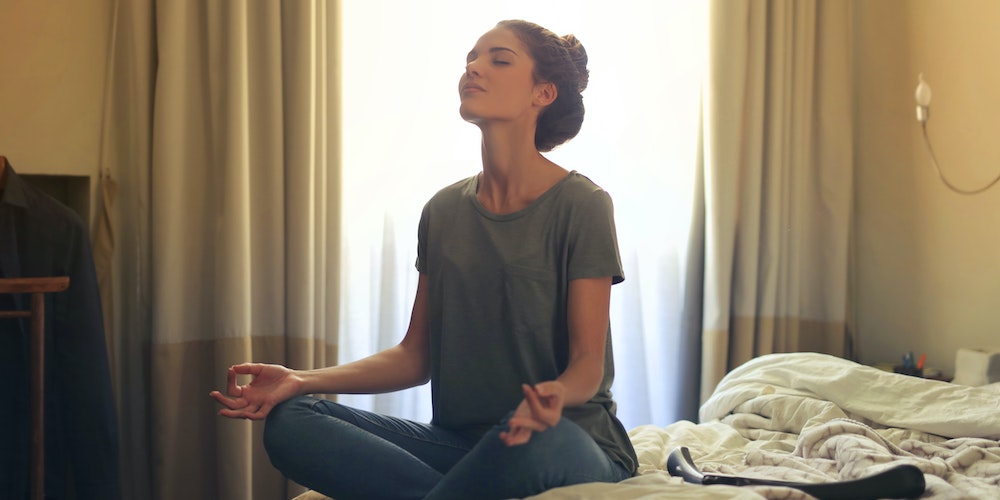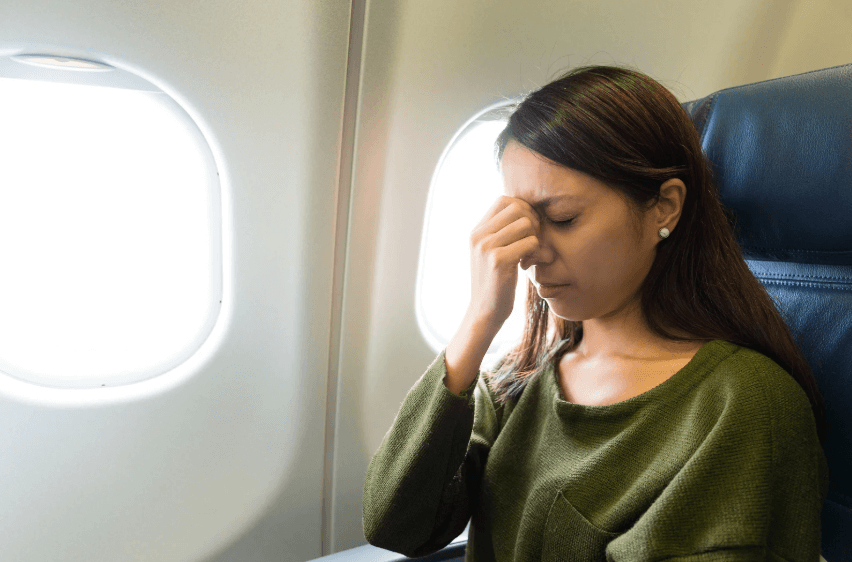5 Types of Meditation for Managing Anxiety

The novel coronavirus pandemic brings with it great uncertainty, and uncertainty is a major culprit in anxiety. It’s normal and understandable to be feeling anxious right now. Anxiety is not always harmful, and sometimes it serves to protect us from harm when it drives us to take action on matters over which we have control. However, when your worries center around things that are out of your hands, anxiety can become all-consuming and you might feel as if your mind is like an engine revving in neutral – speeding up but going nowhere fast.
What is anxiety?
Anxiety usually involves both frequent worry and uncomfortable physical symptoms.
Worry is associated with:
- Frequent feelings of impending doom
- Difficulty concentrating
- Irritability
- Difficulty sleeping
The physical symptoms of anxiety are similar to symptoms you might feel when you are afraid or in danger. Common physical symptoms of anxiety include:
- Pounding heart and/or chest pain
- Upset stomach, nausea, diarrhea
- Fatigue
- Headaches and other unexplained aches and pains
- Muscle tension and inability to relax
- Trembling/twitching
- Heightened startle reflex
Meditation for managing anxiety
The good news is there are effective ways to rein in your worries and find peace. Meditation can help with both the cognitive and physical symptoms of anxiety by 1. changing your relationship with your thoughts, and 2. helping you learn how to relax your body.
Maybe you’ve heard about meditation and its benefits, but either you don’t know where to start, or you dismiss it altogether because you think you can’t do it or it’s not for you. Some people are hesitant to try meditation because they believe it is something that takes excessive training and practice to learn. In reality, anyone can meditate. It does not require any special skills or materials, and it is available to you at any time.
How breathing meditation works
To begin a breathing meditation, simply focus on your breath, wherever you feel it most. This could mean focusing on the feeling of your lungs filling up and then emptying, the rise and fall of your belly, or the air entering and leaving your nose as you breathe. Inevitably, your mind will wander, because that is what minds are meant to do. When you notice that your attention has drifted from your breath to your thoughts, simply notice that it happened without judging, and gently return your attention to your breath.
By practicing non-reactivity and non-judgment to your thoughts, you are changing your relationship with your thoughts. Your thoughts start to lose their power when you learn how to observe them as if they are leaves floating in a stream, or clouds passing by in the sky. Said another way, thoughts come and go like waves, and we can choose whether to fight each wave and get caught up in the current or to simply let each wave come and go by floating on the surface.
Meditation is also a practice of training your mind to stay in the here-and-now. Anxiety tends to pull us out of the moment and into the past or the future. The problem is that we do not have any control over what has already happened or what is yet to happen. We can only work in the present.
Other types of meditation for managing anxiety
Meditation transcends all cultures and beliefs. There are many ways to meditate, but all of them have one thing in common: focus.
Four other popular types of meditation:
- Mindfulness: Being mindful is another way of practicing staying in the here-and-now. This involves paying extra attention to things that we normally do automatically. You can practice mindfulness while eating, walking, etc. – any activity you are engaged in. Tune in to all five of your senses – what do you see, hear, smell, feel, taste? Practice gratitude. Immerse yourself in what it feels like to be alive, experiencing the world in real-time, right now.
- Body scan: Moving from your toes to the top of your head, concentrate your attention on one body part at a time. Take your time noticing how each part of your body feels. Note any sensations you feel, and try not to judge them. If you notice any tension, see if you can breathe into that part of the body, and then release the tension as you exhale.
- Loving-kindness: Begin by focusing on the warm feelings you have for a loved one, and then expand that feeling to others in your life, including those with whom you have difficult feelings. Expand loving-kindness to all living beings, and finally, yourself.
- Guided imagery: Start by imagining yourself in a beautiful place of your choosing, and proceed by imagining everything around you – imagine in as much detail as you can the sights, sounds, smells, tastes, and physical properties of wherever you imagine yourself to be.
Getting help for managing anxiety
Meditation can be an important component in your efforts to manage anxiety. Exploring factors contributing to your anxiety and other effective strategies for managing it could be another important component.
If you are feeling anxious, know that help is available from the safety of your own home. Schedule your first therapy session online at findmytherapist.com.
Ready to prioritize your mental health?
Great Lakes Psychology Group is here to help. With an extensive network of caring therapists available to meet online or in-person, we make it easy to find the right fit for your unique needs.



